In today’s digital era, proficiency in web development fundamentals is essential for establishing a strong online presence. At the core of web development lies HTML (Hypertext Markup Language), serving as the backbone of virtually every webpage on the internet. In this beginner’s guide, we delve into the essentials of HTML, illuminating its profound significance within the expansive realm of web development.
As the internet continues to evolve, the demand for skilled web developers proficient in HTML remains steadfast. Mastery of HTML empowers individuals and businesses to craft compelling digital experiences that captivate audiences and drive engagement. By understanding HTML’s syntax, semantics, and best practices, you lay a solid foundation for navigating the dynamic landscape of web development, where creativity converges with technology to shape the digital world of tomorrow.
Table of Contents
Introduction to Web Development
Web development has emerged as an essential skillset for businesses and individuals aiming to thrive in the online realm. As the internet continues to serve as a primary platform for communication, commerce, and interaction, the ability to craft compelling web experiences has become paramount. Amidst the myriad of coding languages and frameworks, HTML (Hypertext Markup Language) stands as the foundational building block of web development, forming the backbone of virtually every webpage on the internet.
It’s crucial to understand the pivotal role that HTML plays in shaping the digital landscape. From structuring content to defining the layout and functionality of web pages, HTML provides the framework upon which digital experiences are crafted. Join us as we unravel the basics of HTML and delve into its significance in the dynamic world of web development.
HTML: The Cornerstone of Web Development
- Understand the foundational role of HTML in web development.
- Explore how HTML structures content and defines the layout of web pages.
Crafting Digital Experiences
- Learn how proficiency in web development empowers businesses and individuals to create engaging and interactive web experiences.
- Discover the importance of HTML in shaping user interfaces and enhancing user engagement.
Navigating the Digital Landscape
- Gain insights into the evolving nature of web development and the skills required to stay relevant in the digital age.
- Explore the intersection of creativity and technology in shaping the future of web development.
Understanding HTML
HTML, short for Hypertext Markup Language, serves as the bedrock upon which the digital landscape of web pages is constructed. Acting as a universal language understood by web browsers, HTML provides a standardized framework for organizing and presenting content across the World Wide Web. Through a system of tags, HTML meticulously defines every element within a webpage, from the headings that structure the content to the images that adorn it, and the links that connect it to the broader online ecosystem.
These tags serve as precise instructions, guiding web browsers in rendering the content accurately for users to navigate and engage with seamlessly. Moreover, HTML is not merely a static language but a dynamic tool that evolves alongside the needs and innovations of the online world. As technology advances and user expectations shift, HTML continues to adapt, incorporating new elements, attributes, and standards to accommodate the ever-changing digital landscape. Its versatility and resilience make HTML a foundational skill for web developers, empowering them to create immersive and accessible digital experiences that transcend boundaries and captivate audiences worldwide.
The Structure of HTML
At the foundation of HTML lies a hierarchical structure meticulously crafted to organize and present digital content coherently. Here’s a breakdown of the structural components that define HTML documents:
- Document Declaration: Each HTML document commences with a <!DOCTYPE html> declaration, signalling to web browsers the version of HTML being used and ensuring compatibility and proper rendering.
- Root Element: Following the document declaration is the <html> element, which serves as the root of the document. This element encapsulates all the content within the HTML document.
- Main Sections: Within the <html> element, two primary sections delineate the structure and metadata of the webpage:
- The <head> Section: The <head> section contains meta-information about the document, including the title, character encoding, and links to external resources such as stylesheets and scripts.
- The <body> Section: The <body> section encapsulates the visible content of the webpage, including text, images, multimedia elements, and interactive components.
Nested Elements: Elements within HTML documents are often nested within one another to create a hierarchical structure. For example, headings (<h1> to <h6>), paragraphs (<p>), lists (<ul>, <ol>), and other elements can be nested to organize content effectively.
Attributes and Values: Elements in HTML may also contain attributes and attribute values that provide additional information or specify behaviour. Attributes such as id, class, src, href, and others enhance the functionality and styling of elements within the document.
Understanding the structural hierarchy of HTML documents is essential for developers to create well-organized and semantically meaningful web pages that deliver optimal user experiences. By adhering to established HTML conventions and best practices, developers can ensure the clarity, accessibility, and maintainability of their web content.
Basic HTML Tags
HTML offers a diverse range of tags, each designed to perform a specific function within a webpage. Let’s explore some of the fundamental tags and their respective roles:
- <h1> to <h6>: These tags denote headings of varying levels, with <h1> being the highest level and <h6> the lowest.
- <p>: The paragraph tag is used to define paragraphs of text within the document.
- <a>: This tag creates hyperlinks, allowing users to navigate between different web pages.
- <img>: Used to embed images into the webpage, with attributes specifying the image source, dimensions, and alternative text.
- <div> and <span>: These tags are generic containers used for grouping and styling content on the webpage.
Practical Application of HTML
Understanding HTML lays the groundwork for more advanced web development endeavors. Whether you’re aspiring to create a personal blog, an e-commerce platform, or a corporate website, proficiency in HTML is indispensable. Moreover, HTML seamlessly integrates with other technologies such as CSS (Cascading Style Sheets) and JavaScript, enabling developers to craft visually appealing and interactive web experiences.
When venturing into the realm of web development, one may encounter terms like “Custom Development” and “Custom Web Development.” These phrases denote the creation of tailored web solutions to meet specific client requirements. In this context, HTML serves as the building block upon which custom web applications are constructed. Companies like Devscorp, recognized as a top development company, leverage HTML expertise to deliver bespoke digital solutions that cater to the unique needs of their clients.
Conclusion
Mastering the basics of HTML is the first step towards becoming proficient in web development. By grasping the fundamental principles of HTML, aspiring developers gain the necessary foundation to embark on their coding journey. Whether you’re aiming to pursue a career in web development or simply seeking to enhance your digital skill set, understanding HTML opens doors to a world of endless possibilities in the ever-evolving landscape of web development.







